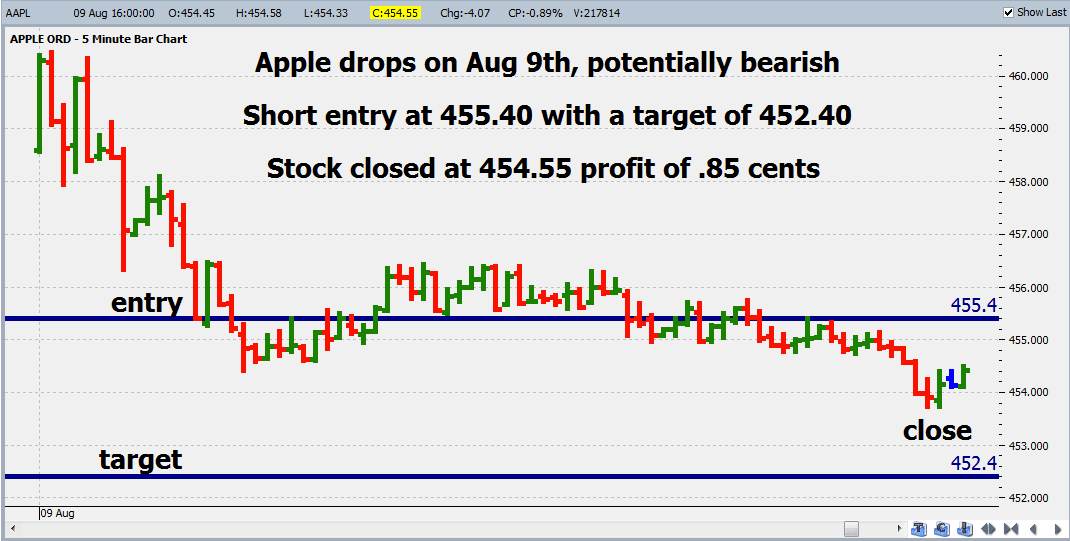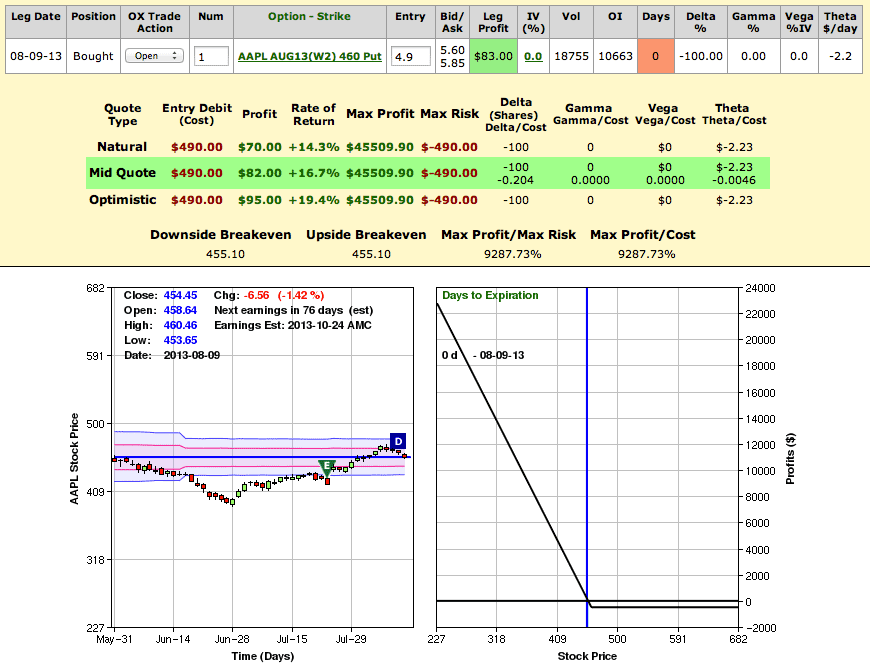 Explore Your Options
Explore Your OptionsQ&A
 Explore Your Options
Explore Your OptionsGot a question about options? Tom Gentile is the chief options strategist at Optionetics (www.optionetics.com), an education and publishing firm dedicated to teaching investors how to minimize their risk while maximizing profits using options. To submit a question, post it on the Stocks & Commodities website Message-Boards. Answers will be posted there, and selected questions will appear in future issues of S&C.
CAN OPTIONS BE DAYTRADED?
Here’s a question I get asked from time to time when I’m circling the globe to speak at events: Can options be daytraded for profit? In the past, I would have answered not unless you want to give your money away over time. In the last year, however, I have changed my tune, researching and even trading options inside of a day. I now answer with a yes, but answering this question thoroughly takes more than a one-word response.
Let’s get one thing straight right now: There is no 100% winning system. I know — I have spent over half my adult life trying to find it, and I have accepted that no matter whether you are a technical or fundamental trader, it’s not out there. If it is, it’s probably illegal. Now that we’ve got that out of the way, let’s consider that with any option strategy, there is a directional (or nondirectional) approach that a trader has to make. I have a three-step process. Spotting the opportunity is first, and it’s not much different for short- or long-term trades. If you’re technical, a chart is a chart — it’s just that short-term traders have no room for distractions. If you’re considering a directional trade, what type of rule-based system will you use to trade? In short-term trading or daytrading, I use a system based on a breakout of resistance levels (or a breakdown from support levels) with a few other indicators that I mix in to determine the likelihood that a stock will rise or fall during the day. The example in Figure 1 uses Apple (AAPL) on August 9, 2013.

FIGURE 1: FIVE-MINUTE CHART ON AUGUST 9, 2013. An $85 profit for the day isn’t much of a return on investment (ROI) for this trade.
As you can see from the chart, this was a snoozer of a Friday. Fridays are often snoozers, due to the lack of government reports, though sometimes traders will push the markets one way or another either to get out of or to hedge positions ahead of the weekend. Taking a short position on 100 shares of AAPL for the better part of the day would have cost between $10,000–45,500, depending on the margin requirement at your brokerage. Nevertheless, an $85 profit (the amount the stock moved in your favor) for the day isn’t much when it comes to return on investment (ROI) on this trade. Could there have been another way to make this paltry amount without putting up the cost?
This is where I begin step 2 — choosing an acceptable risk option trade. Case in point: weekly options. A weekly option is just that — an option that expires in one week or less. In the example in Figure 1, the weekly option expired in hours, at the end of the trading day. The great thing about weekly options that expire soon is that they are cheap, meaning they have the least amount of time value of all options traded. Because of this, the gamma is high, meaning that the option could move like a stock once it gets in the money. I like quality options, because I want the option to move like a stock but cost (and risk) a lot less. In Figure 2, you see the same AAPL case study using weekly 460 puts, expiring later that day.

FIGURE 2: WEEKLY 460 PUTS. This trade was placed for a total cost and risk of $4.90. With little time value remaining in the option since expiration is at the end of this trading day, the option moves close to the rate of the stock price. The stock ended up moving slightly lower for the day, and I exited my trade a few minutes before the close at a credit of $5.60, with a 0.70 profit before commissions.
This trade was placed for a total cost and risk of $4.90. At the time, AAPL was trading at the stock entry price of $455.40:
460 (strike) – 455.40 (stock price)
= $4.60 (intrinsic value)
This means the time value is only 0.30 for the day. The risk on this trade is the amount paid for the put option, or $4.90, but the time decay is only 30 cents. To summarize, I have taken a position for the day, which should react like the stock price by going up or down about five points. The good news is that a move greater than five points against me won’t be worse than the cost of the option. The even better news is that a move greater than five points in my favor produces a profit because the option is moving at the rate of the stock price, due to having very little time value remaining. The bad news is that all this is over when the option expires.
Finally, I will plan and manage the trade. In the case of the example in Figure 2, I was filled at $4.90 and the stock went neither up nor down five points. In fact, it moved slightly lower, and I exited my trade a few minutes before the close at a credit of $5.60, with a 0.70 profit before commissions. So much for market orders on the close; but when you’ve got to get out, you’ve got to get out.
So yes, options can be daytraded, but they must be options with the shortest possible time-to-expiration. Weekly options provide just that. In addition, options with more volume (that is, a tighter bid-ask spread) offer more efficiency to a short-term trader. Finally, you must have some sort of short-term stock trading rules that you can apply to short-term options. Remember, it’s the underlying you are relying on to make the money. If you consistently lose trading stocks, then options will only allow you to lose money slower.